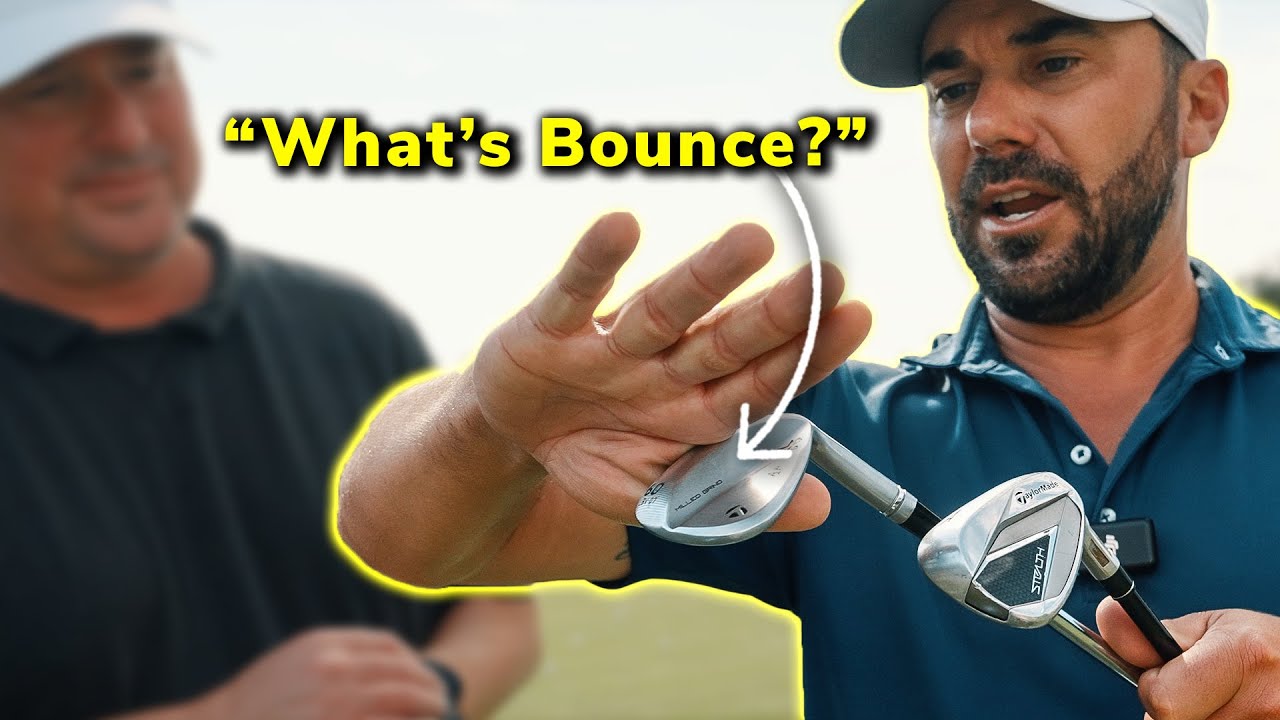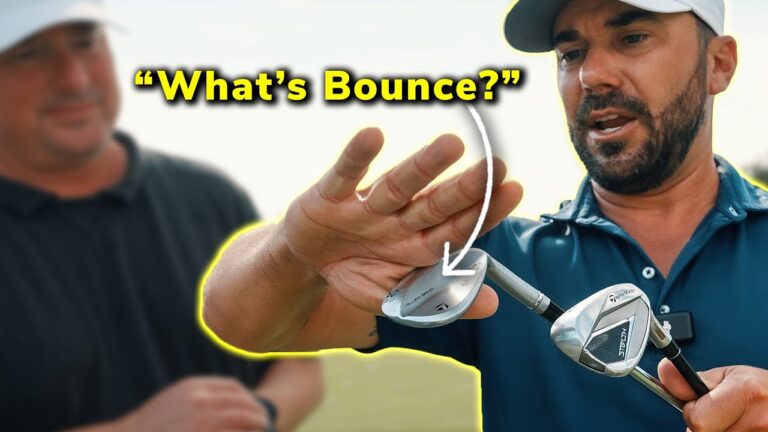
Unlock the secret to a superior short game by mastering wedge bounce. Elevate your golfing skills, enhance your shots, and dominate the greens with confidence.
Table of Contents
- What is Wedge Bounce and Its Importance
- Matching Loft and Bounce with Your Shots
- How Bounce Affects Setup and Swing
- Progressing from Square to Open Face Shots
- Setup Tips to Maximize Bounce Efficiency
- Adapting When Bounce Works Against You
- Exploring New Sole Designs for Optimal Performance
- Practice Progressions for Bounce Mastery
- Essential Shot Types Using Bounce
- Critical Fitting and Equipment Insights
- FAQ
What is Wedge Bounce and Its Importance
Wedge bounce refers to the angle between the leading edge of your wedge and the lowest point of the sole. This angle is critical as it influences how your club interacts with the ground during shots. Think of it as a skid plate; the right bounce allows your club to glide over the grass or sand, preventing it from digging in and stalling your shot.
“I can lay that club open, and look at how my leading edge can be under the ball.”
Matching Loft and Bounce with Your Shots
Your short-game success can often be a matter of the right club fit rather than technique. Having the correct loft and bounce is essential for executing those high, soft shots with ease. For instance, a 60-degree wedge with the appropriate bounce allows for those shots without altering your natural swing tempo.
Rule of Thumb: For high, soft shots, opt for a higher loft and consider a 60-degree wedge to ensure the ball stops quickly.
How Bounce Affects Setup and Swing
Using the correct bounce allows you to maintain a conventional setup while achieving high, soft shots. Position your weight left, align your hands forward or over the ball, and engage in a rhythmic swing to let the sole slide under rather than dig into the surface.
“Club just slides right underneath the ball. Beautiful contact. It dies on the green.”
Progressing from Square to Open Face Shots
Begin with the clubface square to the target. Once comfortable, gradually open the face a few degrees to see how it impacts your shot. Small adjustments can lead to significant differences when manipulating the wedge.
“Start square, gradually kind of tweak it a little bit day in and day out until you feel comfortable with it.”
Setup Tips to Maximize Bounce Efficiency
- Hands Position: Position your hands slightly forward to elevate the leading edge beneath the ball.
- Weight Distribution: Shift your weight towards your left side to enable a shallow entry of the sole.
- Swing Intent: Employ a smooth, rhythmic swing—let the bounce facilitate the shot.
- Turf Interaction: Think of a minor pinch of turf rather than a deep cut.
Adapting When Bounce Works Against You
Bounce is beneficial in many situations, but challenges arise in firm bunkers or hard turf where it may lead to thin contacts. In these cases, opt for a lower-bounce wedge or modify your technique.
Exploring New Sole Designs for Optimal Performance
Modern wedges now feature innovative sole designs that balance multiple bounces, including stepped soles. These designs allow for versatile playability, enabling the club head to maintain contact without excessive digging.
How to Choose:
- Acclimate to common lies and conditions—soft or firm, lush or sparse.
- Versatile wedges offer high loft with moderate to high bounce for multifaceted play.
- Precision biters for tight lies may benefit from lower bounce specifics.
Practice Progressions for Bounce Mastery
- Strike several shots with a square face and analyze the turf interaction.
- Slightly open the face and note differences in the ball’s flight and landing.
- Adjust hand and weight positioning to tweak your approach.
- Experiment with swing tempo for consistency.
- Shift to different lies and surfaces, observing bounce interaction.
Essential Shot Types Using Bounce
- High Flop Shots: Use a high-loft wedge with opened face; rely on bounce to prevent digging.
- Pitch and Stop: Maintain a square face with moderate tempo.
- Bump and Run: Lower-lofted wedges keep shots low and rolling.
- Bunker Escape: Adapt your choice and technique based on sand firmness.
Critical Fitting and Equipment Insights
Wedge fitting can optimize how your clubs perform, aligning them perfectly with your swing and course conditions. This ensures that you’re equipped for success in diverse short-game scenarios.
Key Takeaways:
- Correct clubs simplify complex short-game challenges.
- Combine higher loft and bounce for soft shots without radical swing changes.
- Prepare alternative strategies for firm or tight conditions.
FAQ
What exactly is wedge bounce and how do I recognize it on the sole?
Wedge bounce is the angle formed by the lowest point of the sole relative to the leading edge. You can visually inspect a wedge by placing the club sole flat on a surface and observing how much of the rear sole lifts or sinks. Wedges with more visible angle or a thicker trailing sole have more bounce. Many modern soles also show stepped lines that represent primary and secondary bounce zones.
How much bounce should I choose for a 60-degree wedge?
Most players benefit from moderate to high bounce on a 60-degree wedge because that combination allows you to open the face and still slide under the ball. If you play in soft sand or lush turf frequently, choose higher bounce. If you play mostly firm conditions, consider slightly less bounce or a specific grind suited to tight lies.
Why do I hit thin shots when I open my wedge face?
Thin shots occur when the leading edge is aimed at the middle of the ball instead of below it. This commonly happens when you open a low-bounce, low-loft wedge too much, or when your setup pushes the hands too far back. Correct this by using a higher-loft wedge with appropriate bounce, moving your hands slightly forward, and opening the face gradually while practicing.
Can one wedge handle all short-game situations?
One wedge can cover many situations if chosen carefully, but you will always benefit from a variety of wedges and sole grinds. For most golfers, having a 60-degree wedge with the right bounce and a 52- or 54-degree gap wedge covers a wide range of short-game needs. Course conditions, sand type, and your typical lies should guide the final choices.
How should my swing change when using a high-bounce wedge?
You often do not need to change your swing drastically. Use a smooth rhythm, shallow entry, and a slightly forward hand position to encourage the sole to slide under the ball. Focus on minimal aggressive chopping motions. The bounce is doing the work to prevent digging, so you can be more relaxed and repeatable.


0 Comments